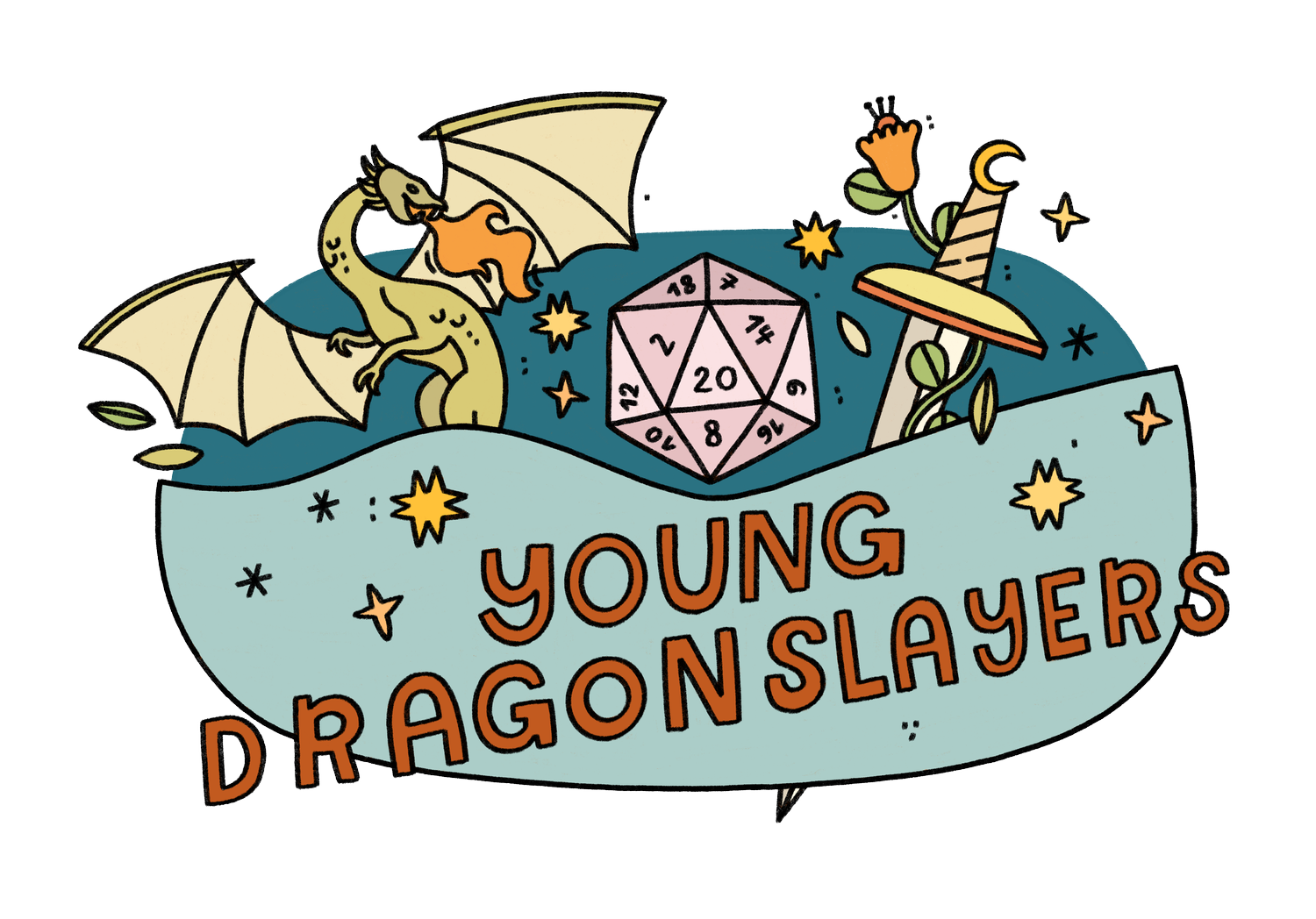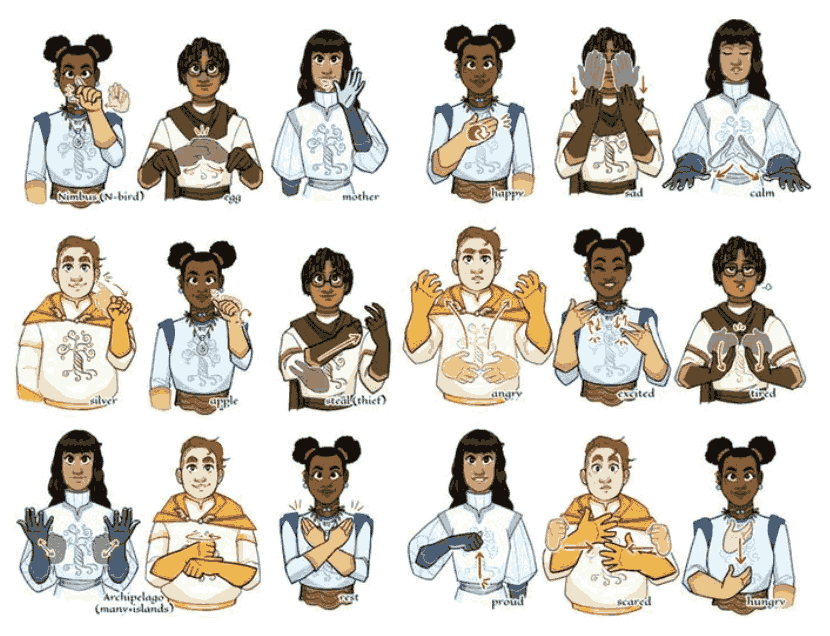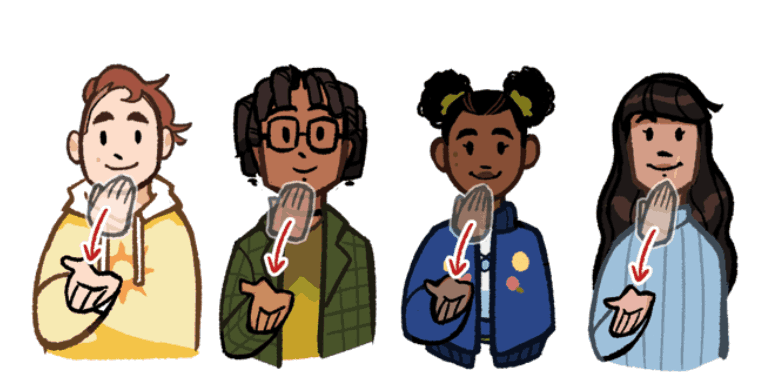Can You Use D&D To Teach Sign Language To Kids?
Teachers and parents alike are looking for ways to teach kids sign language. And while children’s sign language classes, sign language video tutorials, and family sign language lessons are all great ways to learn, it can be a challenge to get children invested. We’ve already seen how Dungeons & Dragons can be used to teach social emotional learning skills, and some teachers are even using D&D in the classroom – why not use D&D to teach sign language? We got the chance to speak to Rich Oxenham, who, after over a decade spent working with the Deaf community, tried to do just that, and co-created a family business along the way! Here’s what he had to say about his journey to teach sign language with Dungeons & Dragons.
Note: Throughout this article, we and Rich both capitalize the term Deaf, which is done to include Deaf culture, identity, and community alongside audiological status. People with hearing loss can describe themself as “Deaf,” “deaf,” “hard of hearing,” “experiencing hearing loss,” or other terms - as with many identities, always ask instead of assume!
Why Is Sign Language Important?
The first thing we wanted to know is, of all the things to try and teach through a game, why sign language? “I think it’s vital,” said Rich. He and his wife, fellow Hatchlings Games founder Kathryn Oxenham, worked a combined 18 years at the Royal National Institute for Deaf People (RNID), formerly known as Action on Hearing Loss, a registered charity working for the inclusion, health, employment, and treatment of those with hearing loss in the United Kingdom. “It’s the biggest disability in the world,” said Rich, “There’s a huge Deaf community in [the city] where I worked….the community is so massive, so it’s important for people to have an underpinning knowledge of [sign language].” In the UK, 1 out of 3 adults are Deaf or have conditions like hearing loss or tinnitus, a huge concentration of the already-high 1.5 billion people affected by hearing loss globally.
When tasked with helping area businesses accommodate Deaf customers, RNID had their work cut out for them. “Clients in the city center had no idea about sign language. They didn’t even know how to do the alphabet,” said Rich, “We’d go to, like, Barclay’s Bank in the UK and then put the sign language alphabet up, and then we do the signs for numbers…banking routines…different currencies…things like that. It transformed a lot of the way they approached the Deaf community.” Sign language is powerful. It can unlock or aid communication among a huge number of people (including non-verbal hearing people) and has evolved its own culture, identity, and artistic expression. “[It’s] why they’re pushing so hard, especially in the UK, to introduce it as a learning qualification at schools, which I think would be amazing,” said Rich.
Using Games Like D&D To Teach Sign Language
Rich started playing D&D in the 80s with his brother’s friends after reading the Fighting Fantasy choose-your-own-adventure books. “We never looked back. We love it,” said Rich, “It’s this amazing thing. I got more comfortable with public speaking. I got more comfortable with all of these things. I made great friends.” We’ve seen the very same things in our Dungeons & Dragons groups: young players making friends, getting to practice social skills, and learning teamwork. “It’s the best hobby, in terms of growth, learning, empathy, all these things,” said Rich. In the playtesting scenario for Inspirisles, Rich and Kathryn’s first game, the players’ characters had to get a golden fish out of a lake using elemental powers. Rich was amazed to see the creativity and collaboration that the players used to reach their goal. “People were going around the outside with air, making eddies in the lake and bringing the fish to the center, making earthenware dishes out of fire and earth to capture them, making bubbles from the water and vines from the banks….It makes for more possibilities, with roleplaying, I think it’s more open-ended.” This flexibility, combined with the inherent motivation to participate – games are fun, after all – educators are finding that RPGs a great tool to integrate into learning. For example, Dr. Maryanne Cullinan uses RPGs in middle-school classrooms and after-school clubs. Instead of giving kids sign language classes, she ran Inspirisles to teach them the basics, and she began to see the impact on her students. “They did a whole semester with [Inspirisles] every week,” said Rich, “Maryanne said to me that some of the students that couldn’t communicate a problem out loud – say it was that time of the month or something – for some of them, then they would use sign language.” For these students, and many other Inspirisles players, the game became their introduction into the world of sign language.
Is D&D The Best Way To Learn Sign Language?
Before crafting Inspirisles, Rich tried teaching sign language with D&D.”It started from a teen Dungeons & Dragons group I was running,” said Rich. The thought to integrate D&D with sign language was a natural consequence of his and Kathryn’s charity work. “We were in such a unique position because we had all the resources at the charity,” said Rich, “We were being taught sign language by a professional, one of the most highly regarded tutors in the country….We had two colleagues. One was a tutor for ASL [American Sign Language]; one was BSL [British Sign Language]. They both played roleplaying games. Both had a Deaf D&D group.”
The colleagues began playing D&D together every week, and, with their passion for both D&D and sign language, they began to wonder how they could integrate sign language learning into Dungeons & Dragons. “I quickly realized that Dungeons & Dragons is so bloated in terms of, especially the spells and the abilities, I mean this is literally pages and pages to go through. It’s impossible. I found someone who was doing sign language for D & D. They were called ASL for RPG, and it was really cool, but eventually they hit a ceiling with it.”
Rich and Kathryn were both creative writers, and they knew people who were knowledgeable about both roleplaying games and sign language. The answer was simple: they would create their own game. “We just limited [magic] to the four elements and simple dice rolls, and the rest was just all about simple sign language learning. So you start with character creation; you learn the alphabet. When you roll dice, you learn numbers. It started to make sense to me. The different elements of roleplaying games can completely be covered by the very basic learning of sign language.” This eventually became Inspirisles.
How To Teach Sign Language with D&D-Style Games
Both D&D and Inspirisles contain classic elements of roleplaying games: players create characters and go on adventures, using their characters abilities to solve problems and rolling dice to determine the outcome. In the Isles, the fictional version of the British Isles where Ispirisles takes place, the characters are Pendragons, descendants of Arthur and Guinevere. Pendragons learn the art of Shaping: using sign language to control the elements. Integrating sign language into the gameplay was key for Rich and Kathryn. “Having video tutorials helps, but how does playing the game itself teach people sign language? At the very beginning, we didn’t want to just hamfist it into the games: RPG, RPG, RPG, sign language in the middle, RPG, RPG, RPG, you know. We wanted to make sure it was integrated throughout, even from the concept of spellcasting being sign language learning.”
They also designed the magic system to promote SEL skills like collaboration. “From the very beginning we really wanted the tests of the game to be using the elements in conjunction with each other, so it’s not just like Avatar: The Last Airbender, where everyone will fight separately. You have to literally use fire, water, earth, and air together at the same time….That was kind of the best thing about it in terms of the kids feeling like they were achieving stuff as a group.” This is supported by the world itself. In the Isles, there’s a negative energy, Disbelief, that accumulates when people hurt others or work against the community and hampers them. It’s balanced by Belief, which accumulates when people help one another and work together and makes things easier: both in the story and the dice rolls!
The games also integrate Deaf awareness elements, going beyond simple language learning to cultural knowledge. Players learn Deaf etiquette like waving instead of clapping, finding a well-lit area, looking directly at the person you’re communicating with, and keeping your speech the same speed and volume. “We got to not only represent the game in terms of the lexicon of the world – our theory, mythology, things like this – but we started to add more things about grammar, more things about using your abilities in collaboration. That led to [players] starting to form sentences and starting to talk to each other more naturally. It’s by no means a professional course, but I think we’ve got enough to encourage people to take a professional course after they’ve played.”
D&D Educator Resources to Teach Sign Language
After a lot of hard work (and playtesting with colleagues and teens) the core Inspirisles book was ready to launch. “Ingruiginngly, we only wanted £1,000 for the Kickstarter. My brother was like, ‘It won’t make any more than that.’” But he deeply underestimated how many people were interested in a sign language RPG; the initial crowdfunding campaign raised thirty times that. “What the funding meant was that we can circulate all that money into producing the game well, so what we had was our own art, our own learning systems, and we got our own tutorial videos done, so it kind of made the product more complete,”
The success of the Inspirisles campaign not only let them invest more into the game itself, but to create a full trilogy of educational RPG books. Inspirisles contained the core game and basic signing techniques. Then came Overisles, an campaign setting for Inspirisles that included world history, maps, lore, and expanded sign language material, incorporating sign language into Feathering (communicating in flight) as well as Shaping (magically controlling the four elements). The final book in the trilogy is Underisles, a second campaign setting that just launched on Kickstarter. For this book, Rich and Kathryn brought in experts Rajnie Kaur and Katy White to create video tutorials for BSL and ASL, Chris Hopper, a roleplaying game accessibility consultant, and a myriad of tabletop experts and Deaf creatives. They’re also working with educators Dr. Maryanne Cullinan and Jennifer Genova in the U.S. to develop a teaching pack to go with the trilogy. “The two big misconceptions with the game are ‘It’s a game for Deaf people,’ It’s a game for hearing people to learn [sign language].... And ‘Do I need to know a load of sign language to run it?’ Absolutely not, no. You’re meant to learn as a group.”
Enrich Your Family with D&D and Sign Language Learning
The success of the Inspirisles Trilogy launched Rich and Kathryn’s family business, Hatchlings Games, which is now their primary income. “It’s transformed our lives, really. There’s not much money in it, but there’s much more beneficial things to money….the time we have with the kids is just unbelievable. For the last three years, we’ve been virtually fulltime with the children: picking up from school, playing every afternoon, all the weekends, all the holidays. We didn’t have that when we were at the charity….I wouldn’t trade that time with the kids for anything in the world.”
If you’re looking for ways to engage with your children and support their education and interests, sign language and roleplaying games are two great ways to do that. Rich and Kathryn love when people play Inspirisles as a family, which can lead to taking family sign language classes or practicing sign language in the home. We’re also big fans of roleplaying games around here, and we’ve seen the many benefits they have on children and families. We run online games of Dungeons & Dragons that are inclusive, safe, and beginner-friendly, all staffed by professional Dungeon Masters who are experienced working with children. If you have a young RPG enthusiast in your life, take a look at the Underisles kickstarter, check out our games, and peruse the rest of the blog for D&D resources!







